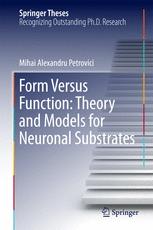

Most ebook files are in PDF format, so you can easily read them using various software such as Foxit Reader or directly on the Google Chrome browser.
Some ebook files are released by publishers in other formats such as .awz, .mobi, .epub, .fb2, etc. You may need to install specific software to read these formats on mobile/PC, such as Calibre.
Please read the tutorial at this link: https://ebookbell.com/faq
We offer FREE conversion to the popular formats you request; however, this may take some time. Therefore, right after payment, please email us, and we will try to provide the service as quickly as possible.
For some exceptional file formats or broken links (if any), please refrain from opening any disputes. Instead, email us first, and we will try to assist within a maximum of 6 hours.
EbookBell Team

4.1
40 reviewsThis thesis addresses one of the most fundamental challenges for modern science: how can the brain as a network of neurons process information, how can it create and store internal models of our world, and how can it infer conclusions from ambiguous data? The author addresses these questions with the rigorous language of mathematics and theoretical physics, an approach that requires a high degree of abstraction to transfer results of wet lab biology to formal models. The thesis starts with an in-depth description of the state-of-the-art in theoretical neuroscience, which it subsequently uses as a basis to develop several new and original ideas. Throughout the text, the author connects the form and function of neuronal networks. This is done in order to achieve functional performance of biological brains by transferring their form to synthetic electronics substrates, an approach referred to as neuromorphic computing. The obvious aspect that this transfer can never be perfect but necessarily leads to performance differences is substantiated and explored in detail. The author also introduces a novel interpretation of the firing activity of neurons. He proposes a probabilistic interpretation of this activity and shows by means of formal derivations that stochastic neurons can sample from internally stored probability distributions. This is corroborated by the author’s recent findings, which confirm that biological features like the high conductance state of networks enable this mechanism. The author goes on to show that neural sampling can be implemented on synthetic neuromorphic circuits, paving the way for future applications in machine learning and cognitive computing, for example as energy-efficient implementations of deep learning networks. The thesis offers an essential resource for newcomers to the field and an inspiration for scientists working in theoretical neuroscience and the future of computing.